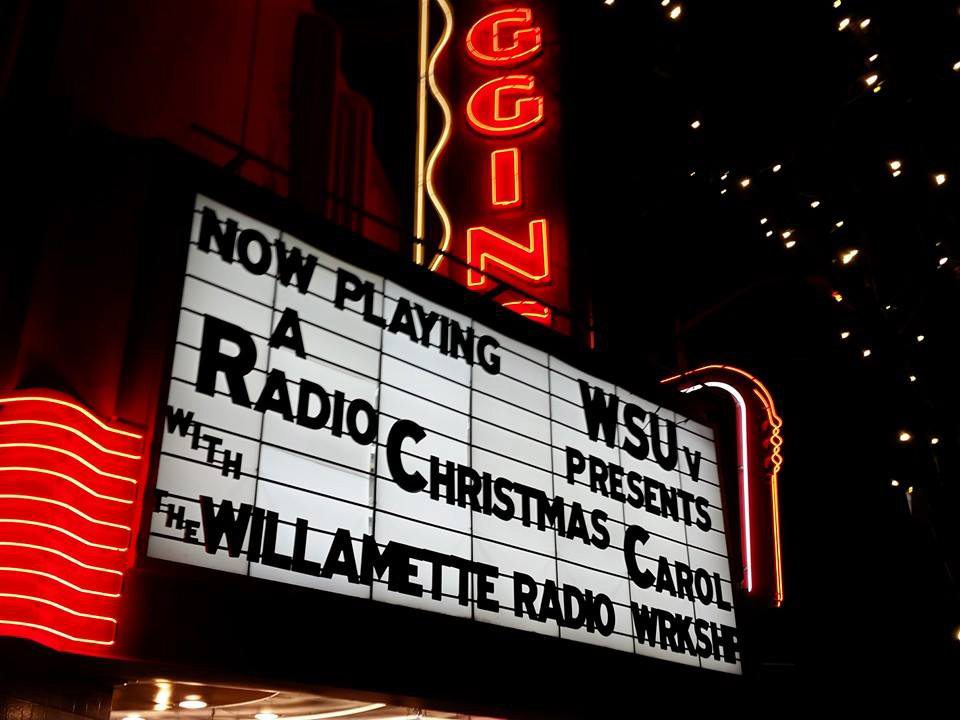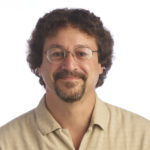Go to the movies — check out, for example, that re-re-re-re-re-reawakened Force — and the experience is all about opening your eyes wide. Even wider-than-wide: 3-D technology can pull you right into picture so you’re literally dodging and weaving spaceships and blasters, not to mention Han Solo’s vastly worried, planet-sized mug.
Some people still prefer closing their eyes. Before the advent of television — and then movies and then video screens in every corner of our lives — the highest technology for mass communication and entertainment stimulated the ears only. The listener’s own imagination had to provide the pictures.
“Radio is collaborative,” said John Barber, an associate clinical professor of creative media and digital culture at Washington State University Vancouver. “Movies in your mind are more powerful than movies on the screen.”
Screens leave nothing to the imagination, Barber said, and render viewers totally passive. But back in what was known as the Golden Age of Radio, dramatic presentations blended the talents of voice actors with captivating sound effects designed by so-called Foley artists. “And you would marinate all of that in your own imagination,” Barber said. “You were much more actively engaged.”
Or, as Willamette Radio Workshop director and voice actor Sam Mowry likes to say: “Radio is better because the pictures are better.” Mowry can never forget his childhood excitement over the warm, friendly voice of radio raconteur (and “Christmas Story” author) Jean Shepherd “weaving whole worlds out of thin air, and sharing the experience of what it’s like to be a human being,” he said.
Barber shared that experience too. As a kid in North Carolina, he said, he pulled classic after-bedtime mischief by hiding under his covers with a radio pressed to his ear, following forbidden tales of mystery and adventure; later came the truly portable transistor radio that you could carry in your pocket. “It was revolutionary,” said Barber. “Sound would just find you out of the air wherever you went, like magic.”
In high school, Barber helped make sound recordings of local music festivals and got a behind-the-scenes glimpse of his local radio station. That got him interested in the technical side of radio — the science underlying the magic, he said.
Now, as a university researcher and teacher, Barber has found a way to bring both magic and science to audiences at downtown Vancouver’s Kiggins Theatre. He is the moving force behind “Re-Imagined Radio,” an ongoing series of live radio-drama performances featuring the voice talents of the Willamette Radio Workshop and sound-effects specialist David Ian.
On March 23, in celebration of Women’s History Month, Re-Imagined and Willamette Radio will present two classics of suspense and mystery: “Sorry, Wrong Number” and “The Hitchhiker.” Both scripts are by Lucille Fletcher, perhaps the greatest master of the radio drama form.
Revenge fantasy
Different versions of this origin story are floating around, but the essence is this: Fletcher wanted to jump ahead in a store line because she was buying supplies for a sick child and had to rush home. A well-dressed woman with too much status and too little sympathy responded: “No you may not. How dare you?”
Fletcher’s literary revenge was “Sorry, Wrong Number,” a radio script about a bedridden woman — a spoiled, demanding, unsympathetic but increasingly pathetic character — who gets embroiled in a terrifying mystery because of crossed phone wires and an overheard conspiracy.
We won’t spoil the twisty plot here. We’ll just say that radio-drama genius Orson Welles, mastermind of the infamous “War of the Worlds” broadcast of 1938, called Fletcher’s story “the greatest single radio script ever written.” After the original radio broadcast in 1943, numerous versions of “Sorry, Wrong Number” were made for radio and screen, including a 1948 movie starring Barbara Stanwyck and Burt Lancaster.
Also on the March 23 bill at Kiggins is another Fletcher script, “The Hitchhiker,” a spooky story written specifically for Welles and his radio acting company, which was eventually adapted into a television episode of “The Twilight Zone.”
The Willamette Radio Workshop has carved itself a successful niche performing holiday and other themed shows — like “The War of the Worlds” at Halloween, “A Radio Christmas Carol” in December and “The Hobbit” for author J.R.R. Tolkien’s birthday every January — but director Mowry said he loves branching out farther. Last Halloween, instead of “The War of the Words,” Willamette Radio tried two early science fiction classics, “R.U.R.” and “The Fall of the City”; and earlier in the year it was an original Superman script, locally relevant and blatantly political, about oil trains and environmental danger.
“We’re always looking for new and different things and John Barber has helped us push that boundary,” Mowry said. “This year for Women’s History Month, isn’t it great that we can do two of the greatest shows ever written for radio — and they were written by a woman?”
Interactive electronics
Mowry, a true believer in the magic of radio, confessed that he’s slightly ambivalent about live-on-stage performances that show off the making of special sound effects.
If You Go
• What: “Sorry, Wrong Number” and “The Hitchhiker,” by Lucille Fletcher, presented by Willamette Radio Workshop and Re-Imagined Radio.
• When: 7 p.m. March 23. Doors open at 6 p.m.
• Where: Kiggins Theatre, 1011 Main St., Vancouver.
• Cost: Free.
• Next up: “Gunsmoke” and “The Shadow” on May 4.
“If I had my druthers we’d have a dark room” with nothing visual muddying listeners’ imaginations, he said. He loves the idea of people just losing themselves in a great story, he said.
But you can’t get away with that in this day and age, Mowry said. Adding the visual “does reinforce what we’re doing and keeps people focused,” he said. That’s why, in addition to featuring its Foley artists as onstage performers, Willamette Radio also projects illustrations on a screen.
“It keeps people from looking at their phones,” Mowry said. That’s the nature of audience behavior these days, he said. “I do it myself. Every few minutes we’re used to reaching for our phones.”
But that’s encouraged during Re-Imagined performances. Barber always welcomes the audience by asking them to silence their phones — and encouraging them to photograph the show and post it all over the Internet in real time. For that matter, at least one Re-Imagined performance was designed to be dependent on audience participation via electronics. Each chapter of the globe-trotting classic “Around the World in 80 Days” ended in an audience poll, Barber said: “Where should we go next? The audience controlled the story.”
East-west, open-closed
Where will Re-Imagined go next? West, and Far East. Here comes another double-feature on May 4: the cowboy soap “Gunsmoke,” perhaps the longest-running radio drama of all, and “The Shadow,” starring a vigilante crime fighter who’s master of the mystical, “Oriental” powers of self-concealment and hypnosis.
Mowry said the scripts, now 50-plus years old, “are incredibly relevant today. They were the favorites of kids everywhere but they are really adult drama.” This “Gunsmoke” episode explores the tortured conscience of Marshall Matt Dillon as he considers hanging up his guns, Mowry said, and this “Shadow” is all about post-traumatic stress in the wake of war.
It’s up to you whether you keep your eyes open to watch magic getting made, or close them tight and immerse your ears in the illusion.




